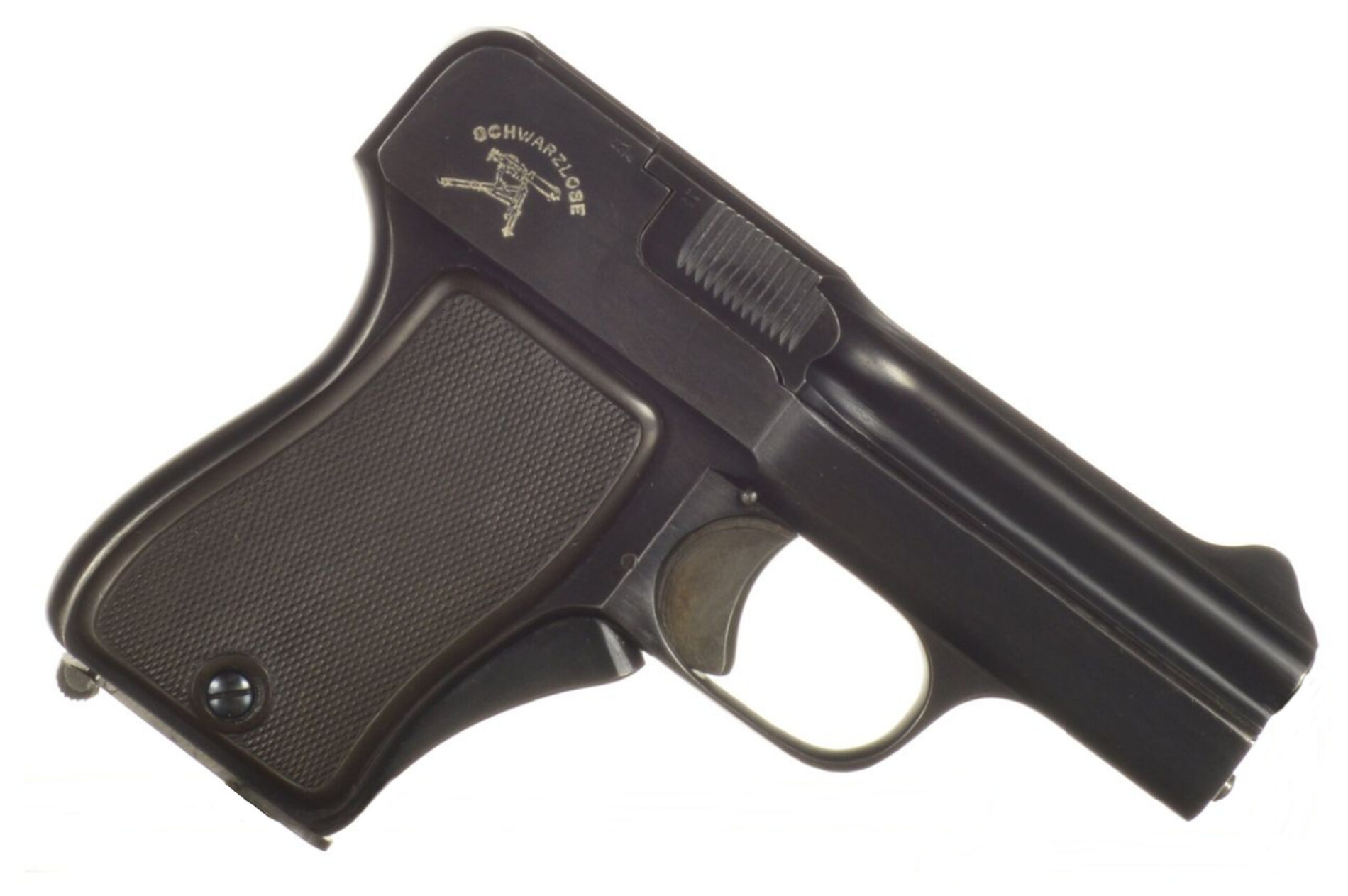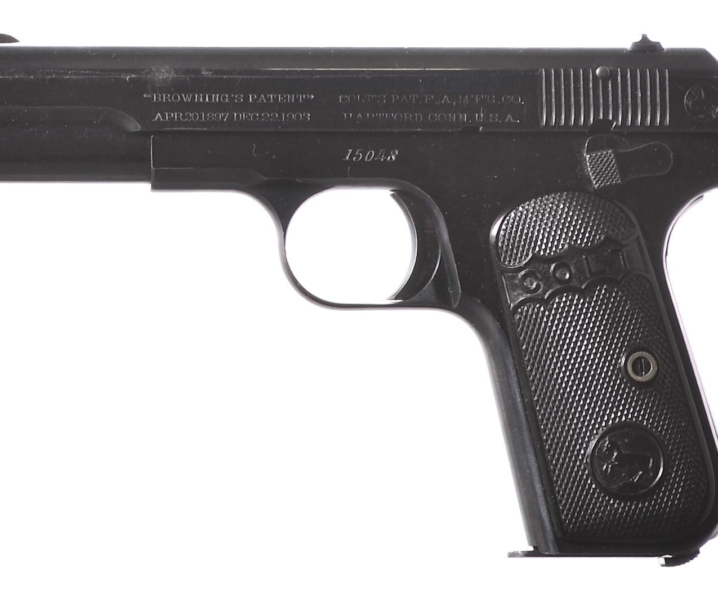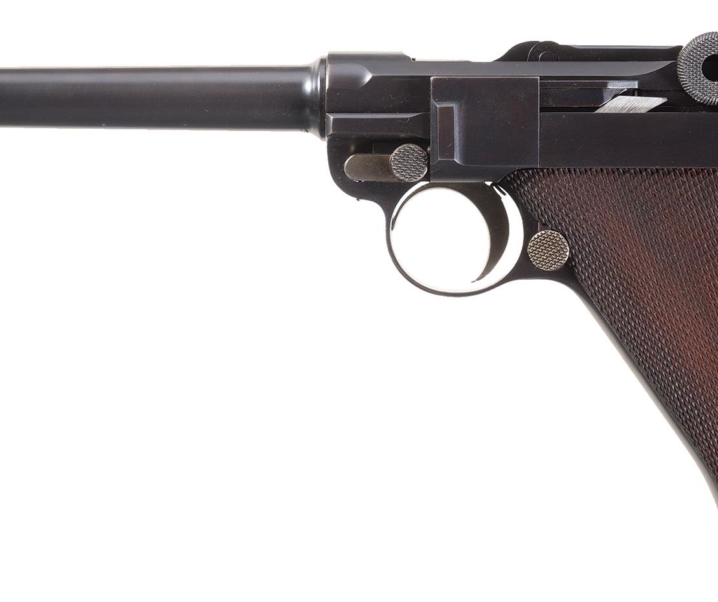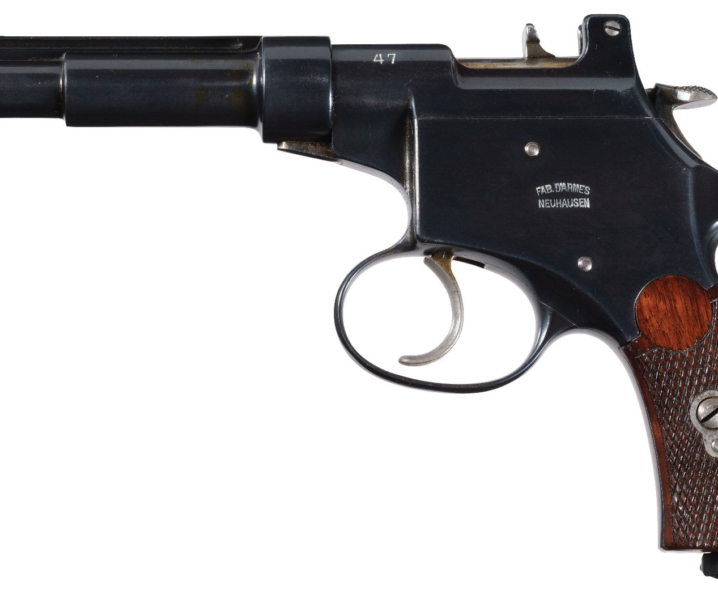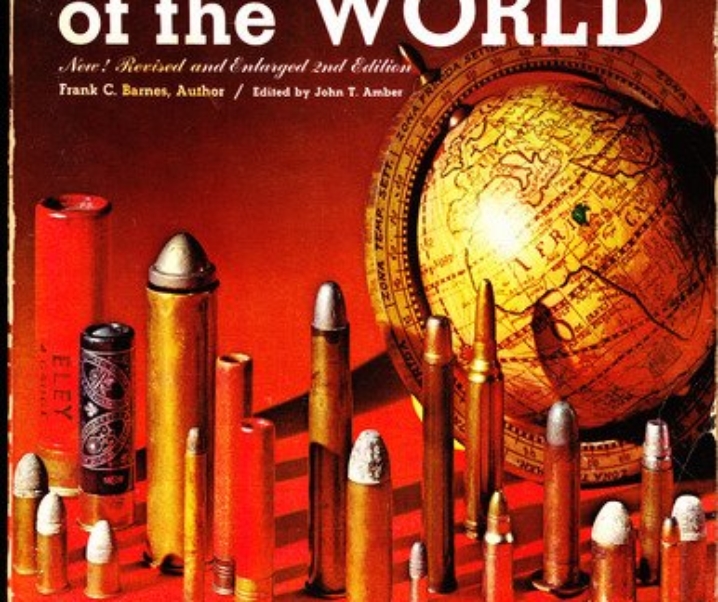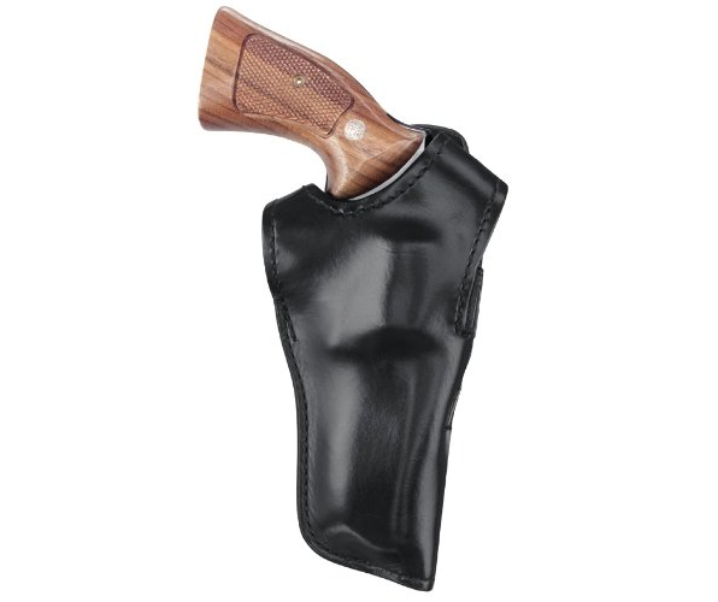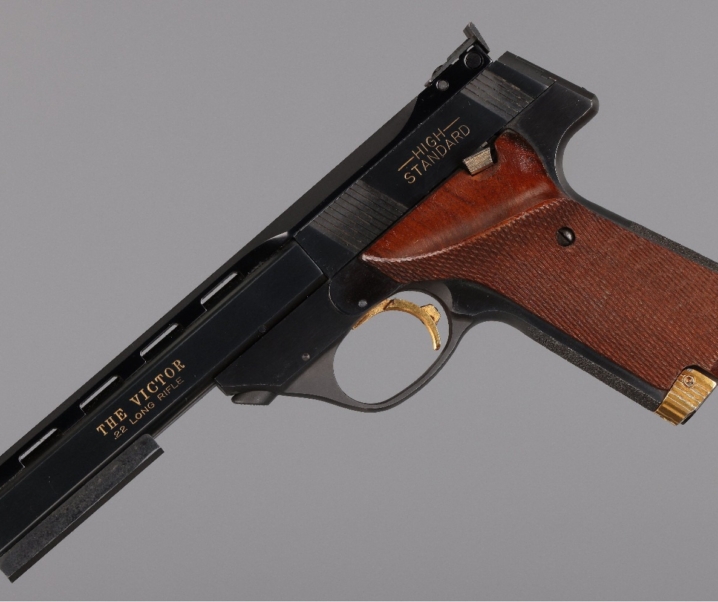The Schwarzlose pistol, which was first patented in 1908, is one of the more different designs to emerge from that developmental era around the turn of the 19th to the 20th centuries, in the lead up to the First World War.
This was the period of history when the automatic pistol was very much in the experimental design phase, an era that saw the Mauser C96, Luger P08, and the Colt 1911 created among many others, few of which have survived through to the present day.
Fast Facts
- Very few pistols were ever made with a blow-forward action, the Schwarzlose is one of only three types known to have existed.
- The Schwarzlose was a small pocket pistol and was chambered for the 7.65 mm Browning (.32 ACP) cartridge.
- A disadvantage of the blow-forward type of action is that it has the reverse effect on recoil by comparison with a blow-back action. i.e. While a blow-back action tends to reduce felt recoil a blow-forward tends to increase felt recoil, because instead of just the mass of the bullet and powder gases flying forward, in the blow-forward action you have the mass of the barrel/slide flying forwards too.
- A Schwarzlose 1908 pistol is coming up for sale by Rock Island Auction: you will find the details at the end of this post.
Andreas Schwarzlose was a respected and experienced firearms engineer, most famous for his machine guns which served his country, Germany, so well during the Great War.

In understanding the design decisions Schwarzlose made as he created his small pistol for personal protection its worth considering why he chose to design the pistol with a fixed breech face: an idea that seems to go against what most pistol shooters would nowadays think of as a sensible idea.
Among the early automatic pistols most used a blowback or recoil operated action with the breech-block sliding rearwards towards the shooter’s face with great force. The Luger for example used a toggle linkage and put steel between the moving breech-block and the shooter’s face, while some designs did not: instead the slide was kept from flying back into the shooter’s face by a removable retaining block. This turned out not to be something that was viewed as entirely trustworthy.
So pistol designers needed to overcome negative impressions a customer might have about a pistol design that they might, rightly or wrongly, consider to be unsafe.
To understand this sort of attitude, consider the modern and past straight-pull sporting and military rifles, and especially the Canadian Ross straight-pull rifle. The model of the Ross rifle that was issued to Canadian troops during the First World War had a design fault that allowed the bolt to be assembled wrongly. If assembled wrongly the bolt would close and seem to be locked but was in fact un-locked and able to fire. If fired in that condition the bolt would fly back causing extremely ugly injuries, and sometimes proving fatal.
That reputation of the Ross stuck, and still gets voiced to this very day: and I suspect it has percolated through to tarnish the reputation of every straight-pull rifle for some shooters.
I think that this has led to the relative unpopularity of modern straight-pull sporting rifles in the US and Canada: American shooters seem, to me at least, to be wary of a straight-pull such as those from Heym, Roessler or Mauser for example.
So imagine in the environment of the turn of the 19th-20th century, shooters who were used to fixed breech handguns such as revolvers, how would they feel about a pistol that had parts that fly towards the shooter’s face when discharged: even when assured that the recoiling slide was made so it could not fly rearwards by accident?
Schwarzlose decided to design a small self-defense pistol in which the shooter was protected from anything flying backwards and re-arranging the shooter’s facial features, and so instead of a blow-back action, he created a blow-forward action: bits of metal flying forwards only posed a danger to the person the pistol was being fired at – which is what a self-defense pistol is for is it not?
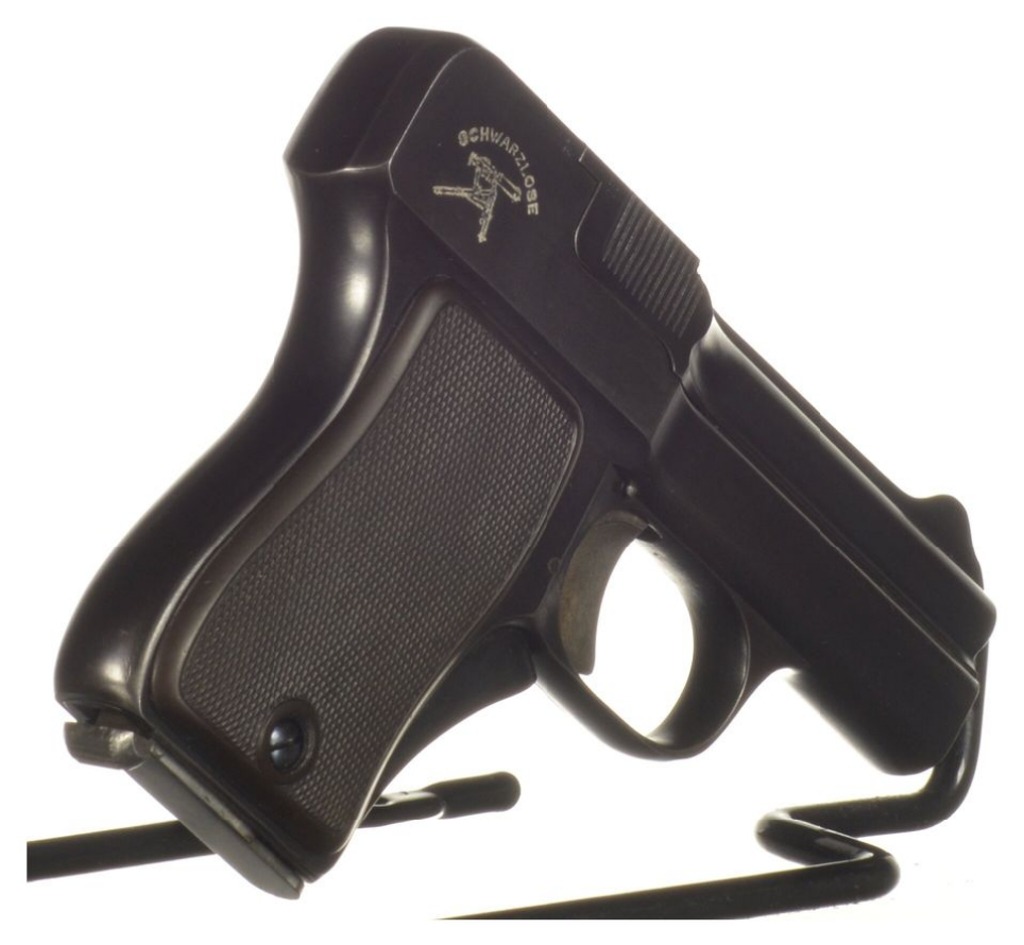
The Schwarzlose design not only provided a pistol that protected the shooter from potential injury but it also enabled the pistol to be kept smaller than a comparable blowback or recoil operated design. This is because the magazine sat underneath the breech area of the barrel.
This was possible because when the pistol was fired the barrel and slide assembly would fly forwards exposing the cartridges in the magazine, and as the barrel/slide assembly came backwards under spring pressure the feed-ramp could pick up the next cartridge from the magazine and chamber it as it slammed home against the breech face ready for the next shot.
Understanding the basic principle of how the barrel would fly forwards is simple enough to explain. If you took physics, or at least science at high school you would have come across Newton’s laws of motion. Newton’s third law says that every action produces and equal and opposite reaction. So, when a pistol is fired the expanding gases push the back of the cartridge case trying to push the pistol backwards while at the same time the expanding powder gases push both the bullet and powder gases forwards out of the barrel.
So in the Schwarzlose pistol the burning powder gases and the bullet being driven forwards take the movable barrel/slide assembly forwards with them until the barrel/slide is stopped by a front mounted stop in the pistol frame.
Here is a video from Forgotten Weapons that shows the action operating at slow-motion.
To ensure the barrel/slide was driven forward with optimum efficiency the barrel of the pistol was made slightly under nominal groove diameter so the fit of the bullet was suitably tight in the bore.
The Schwarzlose was created to be a practical and safe defensive arm. Small size was regarded as being important, as was the ability to carry the pistol in a pocket, and for the shooter to be able to get it into action immediately and instinctively. It was made to be very convenient to carry with or without a holster: we should remember that the best pistol for defensive use is one that you can conveniently always carry, because a defensive arm is of no use if it is too inconvenient to carry resulting in its being left at home in the gun-safe or glove-box of your car.
Andreas Schwarzlose was also aware that his pistol needed to be as instinctive to get into action as a double action revolver – when faced with a life threatening emergency a human being does not need to be fumbling with a safety catch nor any other operation that is not instinctive.
To this end the Schwarzlose had its internal hammer under slight spring tension, but not sufficient to discharge a cartridge – similar in concept to that used by the Glock with its striker kept under light spring tension and brought to full cock when the trigger is depressed: but in the case of the Schwarzlose the internal hammer was given its full spring pressure so that it could fire a cartridge by the shooter squeezing the grip safety which was located at the front of the pistol grip.
When depressed this grip safety brought the hammer under full mainspring pressure and also positioned the sear so the pistol was ready to fire if the trigger was depressed.
Firing the pistol with the grip safety firmly depressed reloaded the pistol and cocked the hammer making the pistol ready for the next shot if needed. If the grip safety was released this relaxed the mainspring pressure so it was insufficient to discharge a cartridge.
The pistol was also provided with a selector button on the left side of the frame behind the trigger which locked in the grip safety in the fire position if needed – such as when shooting at a target at a shooting range.
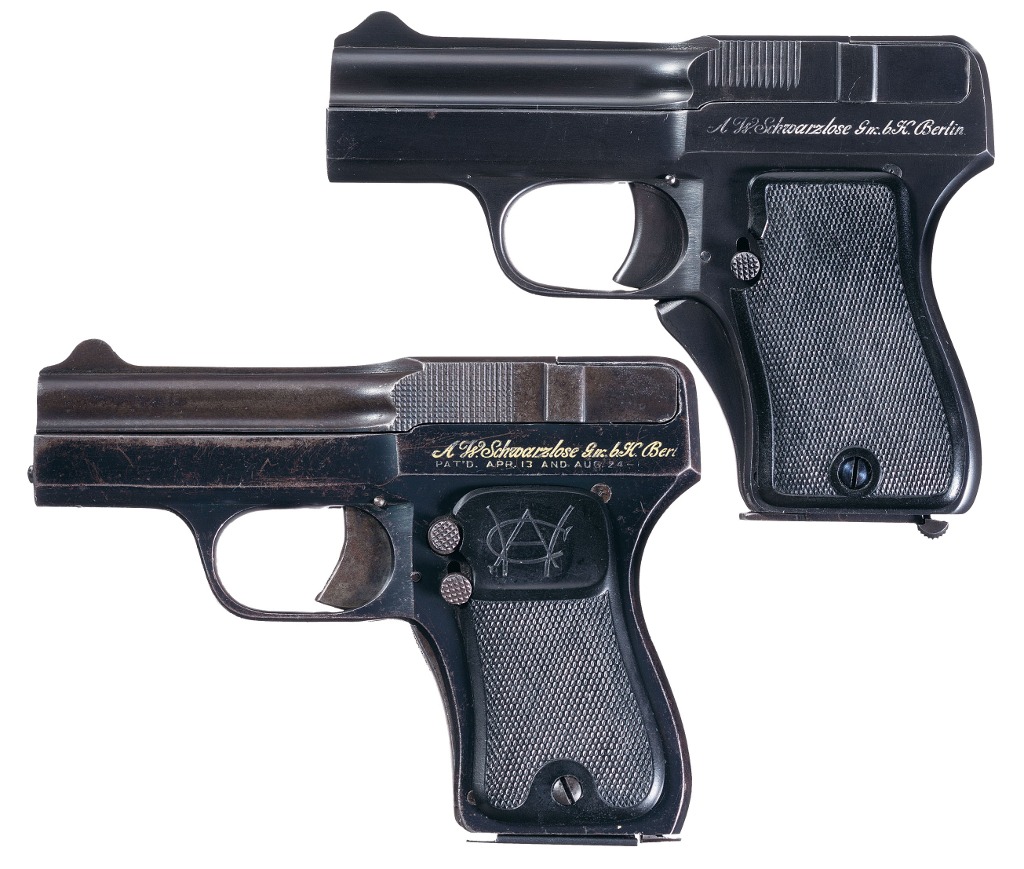
This front mounted grip safety concept appeared decades later in a much modified form as a squeeze cocking device in the Heckler & Koch P7 pistol.
The Schwarzlose pistol was made in four variants, the first of which most likely entered production in or 1909 or later.
The Four Variants
The majority of Schwarzlose pistols are of the first model which is characterised by 13 vertical cut serrations over the chamber area of the barrel/slide which do not completely run to the bottom where the slide meets the frame. The top of the barrel/slide and the frame are slightly scalloped leading to a rib along the barrel with the rounded front sight at its end: a groove to serve as a rear sight is cut into the back of the frame: all this is designed to provide for an instinctive sight picture acquisition.
The top left side of the frame is marked “AW.Schwarzlose G.m.b.H. Berlin.” in a script like font.
The top right side of the frame has “Schwarzlose” and a machine gun graphic.
Grips are of hard rubber and are either checkered for the lower two thirds, with a scalloped out top section to provide a grip for the shooter’s thumb, or they may be fully checkered.
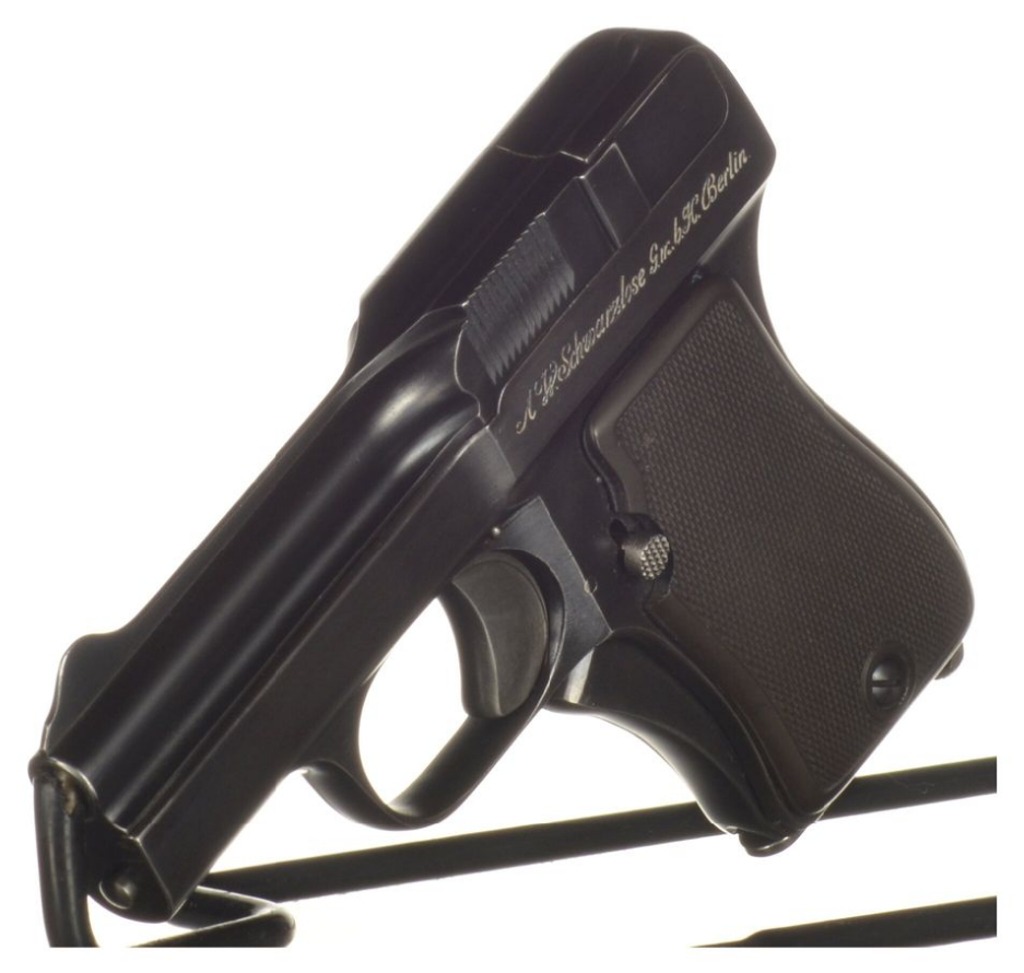
The second model is extremely rare and was a deluxe pistol with nickel plating. The deluxe model has a circular metal blanking off plug where the American style magazine release or manual safety would be, directly above the grip safety locking button.
The third variant was for the American market and was sold by Warner Arms Corporation, Brooklyn, N.Y. U.S.A. Instead of vertical serrations cut into the chamber area of the barrel/slide these pistols have checkering.
This model was fitted with the magazine release located on the left side of the pistol grip behind the trigger, like on a Colt 1911 pistol, instead of the magazine release being on the rear bottom of the magazine well in the European style.
When Schwarzlose ended their business the rights to the pistol and machinery to manufacture them was purchased by the Warner Arms Corporation.
The fourth variant pretty certainly did not enter production but only existed as a prototype, in all likelihood made by Warner Arms Corporation. It did away with the grip safety altogether and its mechanism required it to be carried either with an empty chamber or cocked and locked. This pistol has a safety lever located behind the trigger on the pistol grip, rather like the one used on the Beretta M1994, M1995 and 948.
The second, and third variants of the Schwarzlose are extremely rare, the first variant is the most common but it also is a rare bird.
A Schwarzlose Pistol for Sale
For those who would like to acquire one of these unusual pistols one is coming up for sale by Rock Island Auction at their Sporting and Collector Firearms sale to be held on February 14, 2023.
You’ll find the sale page here.
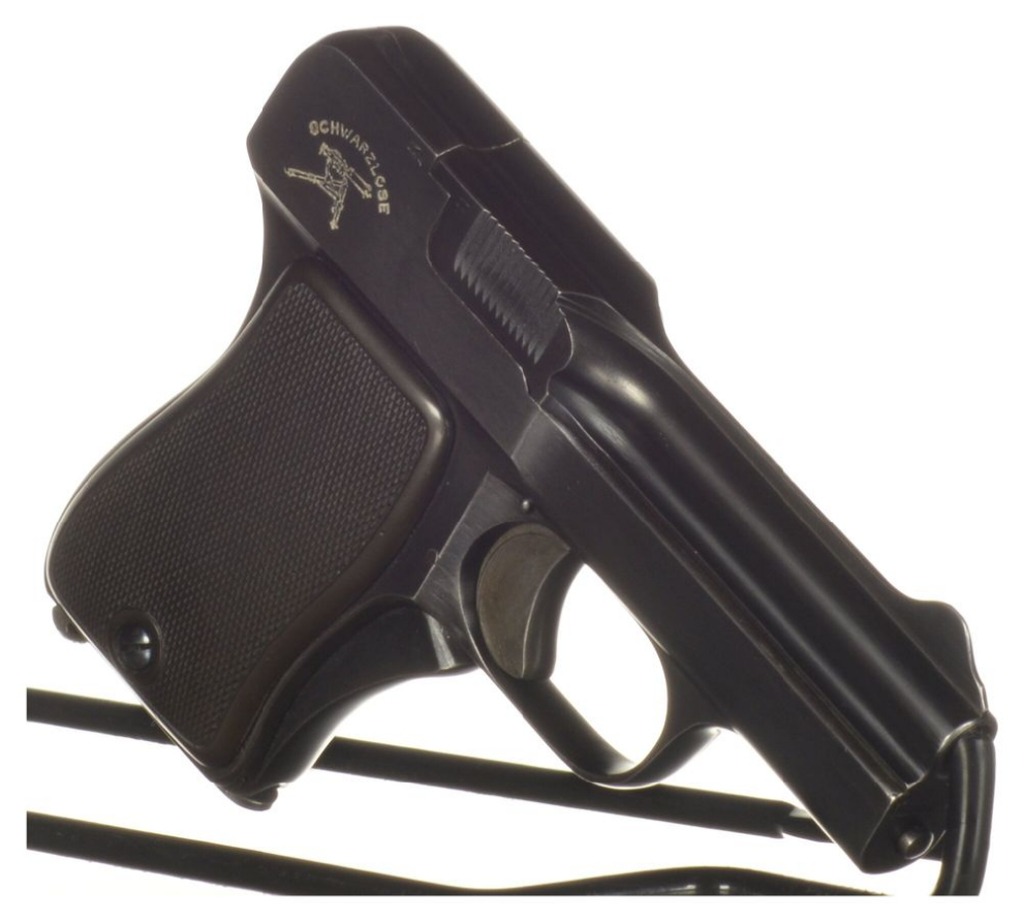
This pistol for sale has been professionally restored by Gale Morgan and is described by Rock Island Auction as follows:
Rating: OB – EXCELLENT- all original parts; over 80% original finish; sharp lettering, numerals and design on metal; unmarred wood. PRF – PROFESSIONALLY REFINISHED OR RESTORED
In Depth History and Technical Information
There are two web pages we’d recommend for those seeking more detailed information on the Schwarzlose pistols and the history surrounding them.
- The 1909 Schwarzlose Pistol by Ed Buffaloe and Ed Dittus
- The Schwarzlose Pistol Model 1909 For the Emperor, the Empire and Overseas Territories, By Friedrich Müller
You will also find the Forgotten Weapons video on this pistol informative and fascinating.
Picture Credits: All pictures courtesy Rock Island Auction except where otherwise noted.

Jon Branch is the founder and senior editor of Revivaler and has written a significant number of articles for various publications including official Buying Guides for eBay, classic car articles for Hagerty, magazine articles for both the Australian Shooters Journal and the Australian Shooter, and he’s a long time contributor to Silodrome.
Jon has done radio, television, magazine and newspaper interviews on various issues, and has traveled extensively, having lived in Britain, Australia, China and Hong Kong. His travels have taken him to Indonesia, Israel, Italy, Japan and a number of other countries. He has studied the Japanese sword arts and has a long history of involvement in the shooting sports, which has included authoring submissions to government on various firearms related issues and assisting in the design and establishment of shooting ranges.

